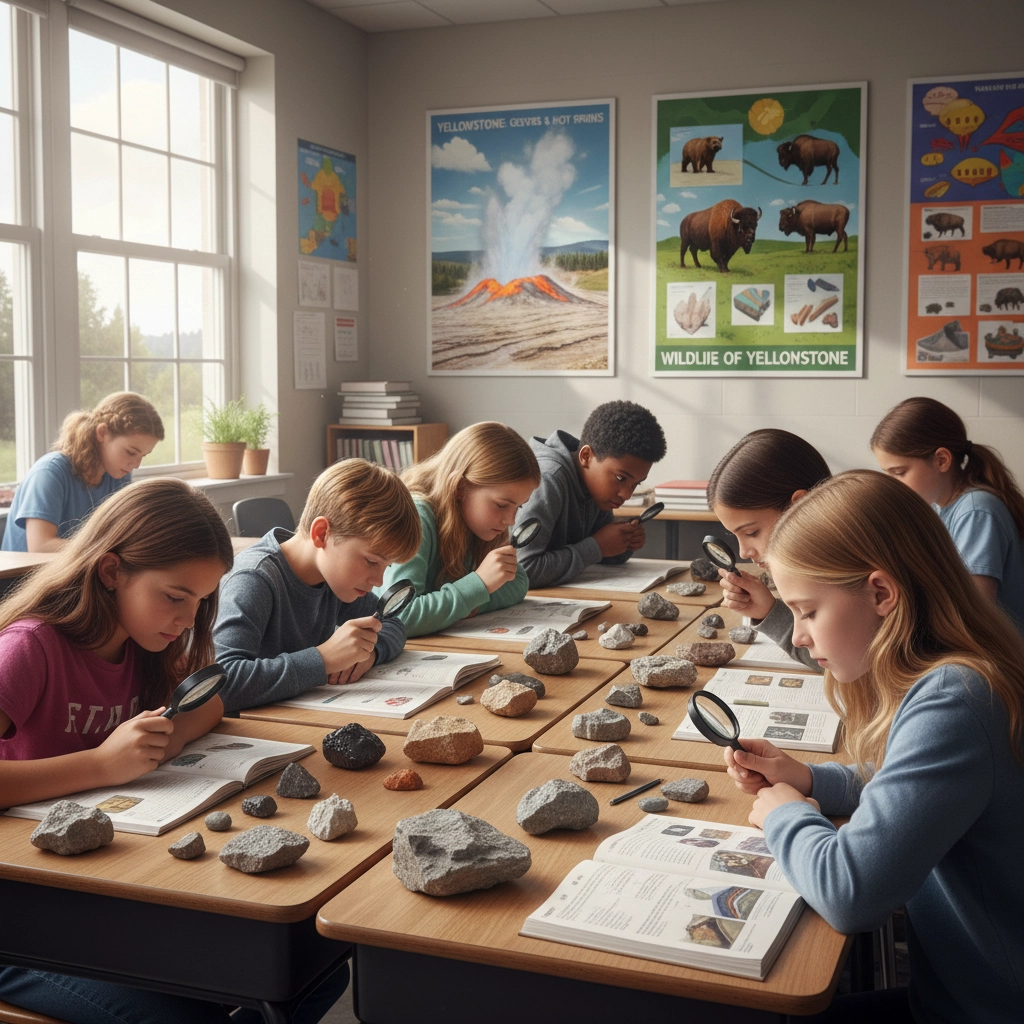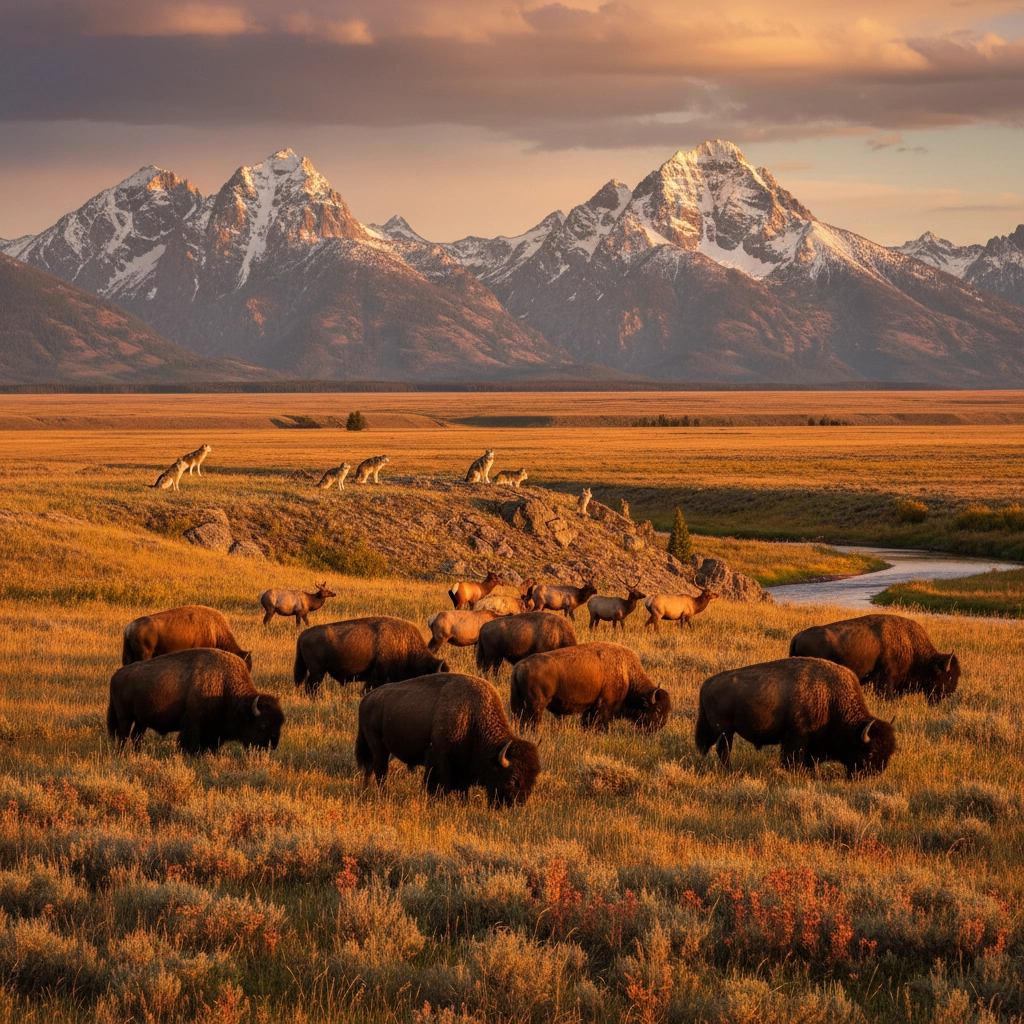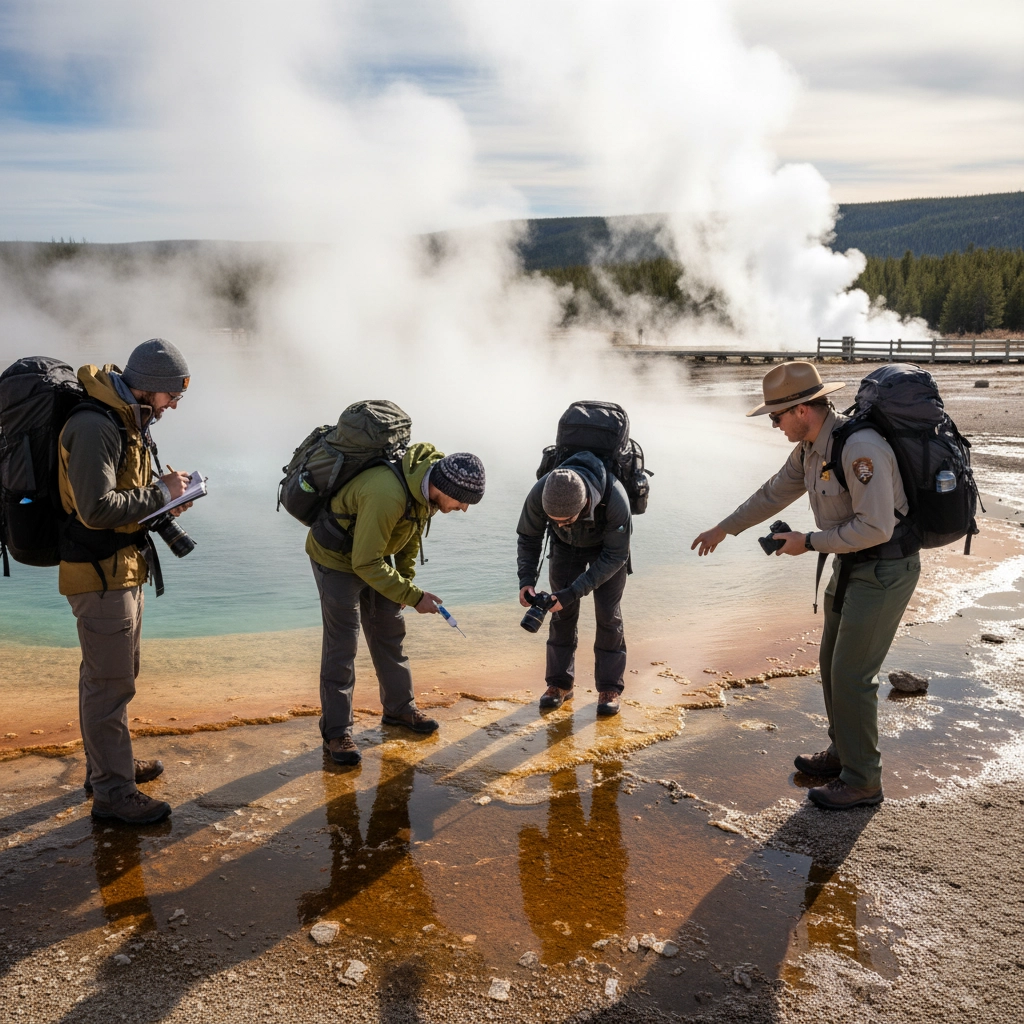Yellowstone Curriculum Integration Guide: Prepping Your Students for an Expedition
- Caleb Mullenix
- Oct 21
- 5 min read
Preparing your students for a Yellowstone expedition involves careful planning and systematic curriculum integration that transforms a memorable trip into a profound educational experience. Ensuring that students maximize their learning opportunities requires establishing clear educational objectives, aligning activities with science standards, and implementing comprehensive pre- and post-expedition classroom work.
Pre-Expedition Curriculum Alignment: Building the Foundation
Begin by researching your state's science standards and identifying specific learning objectives that align with Yellowstone's unique educational opportunities. The park offers unparalleled access to geological formations, ecosystem dynamics, wildlife behavior, and conservation principles that directly support Earth Science, Life Science, and Environmental Science curricula.
Focus your preparation efforts on three core areas: geological processes and volcanic activity, ecosystem interactions and wildlife adaptation, and human impact on natural systems. These foundational concepts will enable students to engage meaningfully with park rangers, ask informed questions, and make scientific observations during their expedition.
Create a timeline that begins curriculum integration at least six weeks before departure. This preparation period allows sufficient time for students to develop background knowledge, complete research projects, and establish personal learning goals for their expedition experience.

Step-by-Step Student Preparation Activities
Week 1-2: Research and Knowledge Building
Assign students to create comprehensive research portfolios focused on Yellowstone's distinctive features. Direct students to investigate the park's volcanic history, including the Yellowstone Caldera, geothermal features, and evidence of past eruptions. Encourage students to explore the concept of hotspots and their role in creating Yellowstone's unique landscape.
Establish research groups focused on different aspects of the park ecosystem. Assign teams to investigate predator-prey relationships, particularly wolf reintroduction and its cascading effects on the ecosystem. Direct other groups to study bison behavior, elk migration patterns, and the role of keystone species in maintaining ecosystem balance.
Week 3-4: Interactive Learning and Skill Development
Implement hands-on activities that simulate field research techniques students will use during their expedition. Practice using field guides for wildlife identification, teach basic geological observation skills, and introduce students to scientific journaling methods.
Create classroom activities that mirror expedition experiences. Set up stations where students practice measuring water temperature, pH levels, and dissolved oxygen content. These skills will prove invaluable when students investigate Yellowstone's thermal features and aquatic ecosystems.
Emphasize the importance of detailed observation and accurate data collection. Provide students with field notebooks and establish protocols for recording observations, including date, time, location, weather conditions, and detailed descriptions of phenomena observed.

Essential Learning Objectives and Science Standards Alignment
Earth Science Standards
Align expedition activities with Next Generation Science Standards (NGSS) focusing on Earth's systems and their interactions. Students will observe evidence of plate tectonics, volcanic activity, and geothermal processes that demonstrate how energy flows through Earth's systems.
Direct attention to weathering and erosion processes visible throughout the park. Students will examine how water, wind, and temperature changes shape Yellowstone's landscape, providing concrete examples of geological processes discussed in Earth Science curricula.
Life Science Integration
Emphasize ecosystem relationships and biodiversity concepts that align with life science standards. Students will observe food webs in action, study adaptation strategies of various species, and investigate how environmental factors influence population dynamics.
Focus on conservation biology principles, including endangered species recovery programs and habitat restoration efforts. The park's wolf reintroduction program provides an excellent case study for understanding ecological restoration and species interdependence.
Environmental Science Connections
Integrate climate change impacts and human influence on natural systems. Students will examine how changing environmental conditions affect wildlife behavior, plant communities, and ecosystem stability.
Address conservation ethics and stewardship responsibilities. Encourage students to consider their role in protecting natural resources and promoting sustainable practices in their home communities.

During the Expedition: Maximizing Educational Impact
Daily Learning Protocols
Establish consistent daily routines that reinforce learning objectives. Begin each day with weather observations and predictions, encouraging students to connect atmospheric conditions with wildlife activity and geological processes they might observe.
Implement structured observation periods where students practice scientific skills learned in classroom preparation. Provide specific observation prompts and data collection sheets that guide student attention to significant features and phenomena.
Create opportunities for students to interact with park rangers and researchers. Prepare students with thoughtful questions that demonstrate their preparation and genuine curiosity about park science and conservation efforts.
Field Journal Requirements
Require students to maintain detailed field journals throughout their expedition. Establish specific requirements including daily entries, sketches of geological features, wildlife observations, and personal reflections on learning experiences.
Provide journal prompts that connect field observations to classroom concepts. Ask students to explain geological processes they observe, describe animal behaviors and their ecological significance, and identify evidence of human impact on natural systems.
Emphasize the importance of accurate documentation for scientific validity. Encourage students to include measurements, coordinates, and detailed descriptions that would allow other researchers to understand and verify their observations.
Post-Expedition Integration and Assessment
Immediate Follow-Up Activities
Schedule reflection sessions within the first week after return to capture vivid memories and impressions while they remain fresh. Facilitate small group discussions where students share significant observations and unexpected discoveries.
Direct students to organize and analyze data collected during their expedition. Create classroom activities that require students to graph temperature readings, map wildlife sightings, and compare observations from different park locations.
Encourage students to identify questions that arose during their expedition but remain unanswered. Use these questions as starting points for extended research projects that continue learning beyond the expedition experience.

Long-Term Learning Projects
Assign comprehensive projects that require students to synthesize expedition experiences with ongoing classroom curriculum. Direct students to create presentations that explain specific geological or ecological phenomena they observed, supporting their explanations with scientific evidence and accurate terminology.
Establish connections between Yellowstone observations and local environmental issues. Encourage students to investigate how concepts learned in Yellowstone apply to ecosystems and geological processes in their home region.
Create opportunities for students to share their learning with broader audiences. Organize presentations for younger students, parent groups, or community organizations that allow expedition participants to become educators and advocates for scientific understanding and environmental stewardship.
Assessment Tools and Resources
Downloadable Assessment Materials
Develop comprehensive rubrics that evaluate student performance across multiple learning objectives. Create separate assessment criteria for research preparation, field observations, data collection accuracy, and post-expedition synthesis projects.
Design peer evaluation forms that encourage students to assess group contributions and collaborative learning experiences. Include criteria for scientific communication, data sharing, and respectful interaction with park resources and personnel.
Provide self-reflection tools that help students identify personal learning growth and areas for continued development. Create prompts that encourage students to connect expedition experiences with career interests and future learning goals.
Teacher Resource Package
Access comprehensive curriculum materials through Appleseed Expeditions that include lesson plan templates, activity worksheets, and assessment tools specifically designed for Yellowstone expeditions.
Utilize pre-designed data collection sheets, field guide supplements, and safety protocols that ensure consistent learning experiences while maintaining focus on educational objectives and student safety.
Connect with other educators who have led successful Yellowstone expeditions through our educational travel community. Share best practices, troubleshoot challenges, and continuously improve expedition programming to maximize student learning outcomes.

Ensuring that your Yellowstone expedition achieves its maximum educational potential requires systematic preparation, clear learning objectives, and comprehensive follow-up activities. Through careful curriculum integration and structured student preparation, your expedition becomes a transformative learning experience that deepens scientific understanding, promotes environmental stewardship, and creates lasting educational impact. The investment in thorough preparation yields immeasurable returns in student engagement, scientific literacy, and appreciation for our nation's natural heritage.



Comments